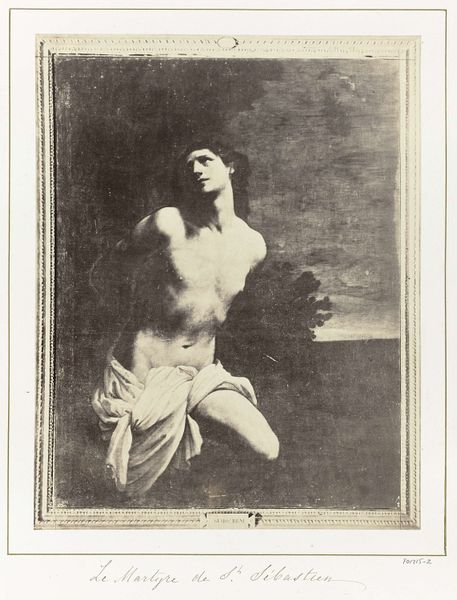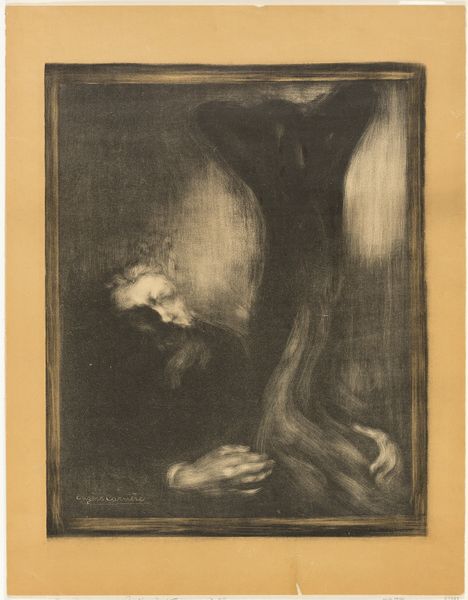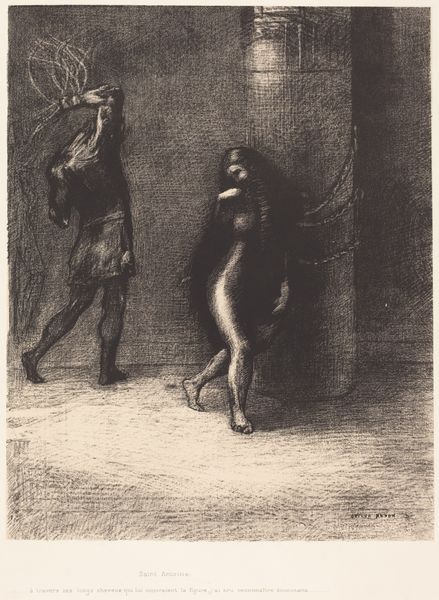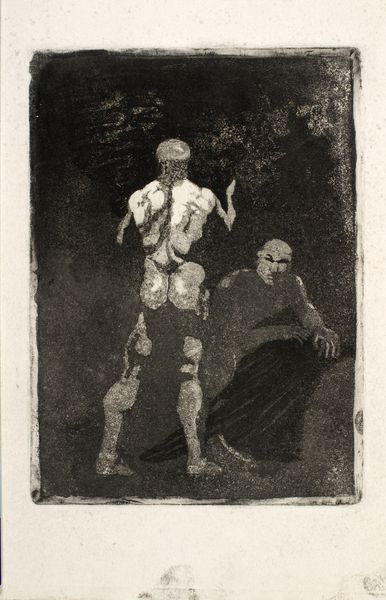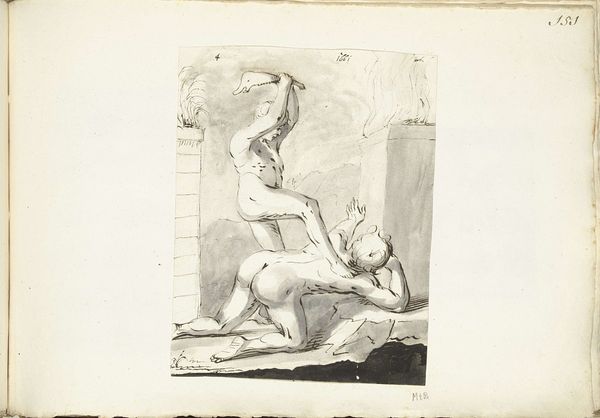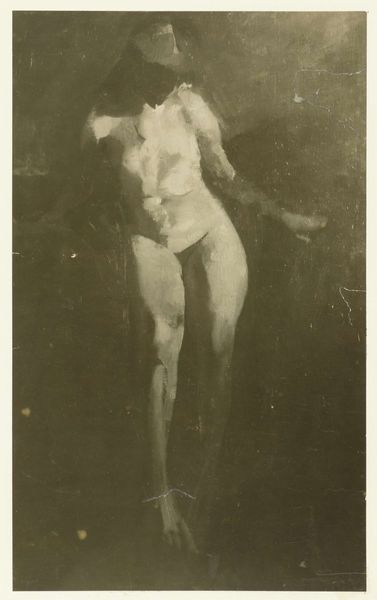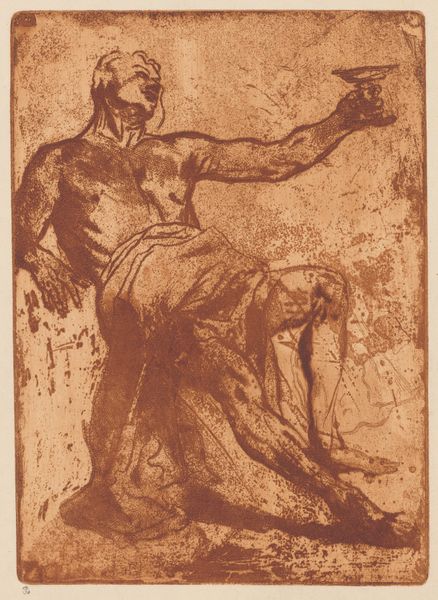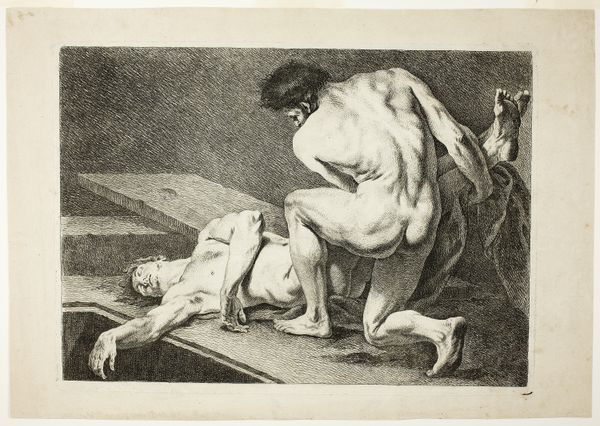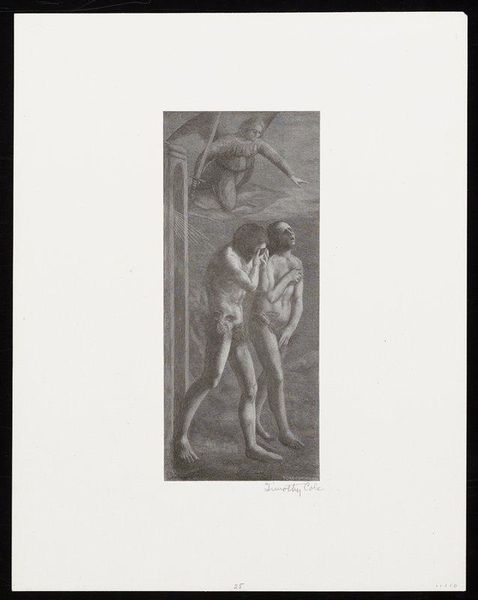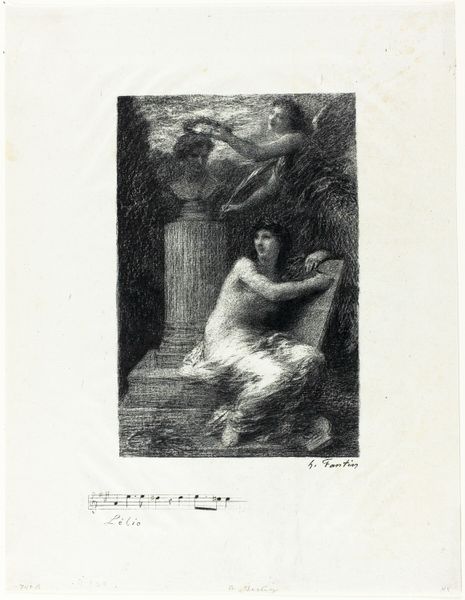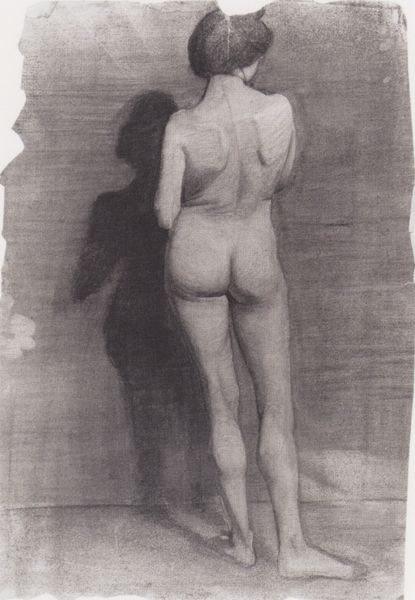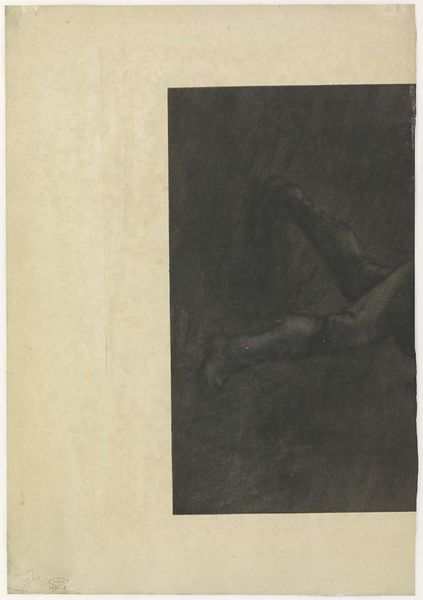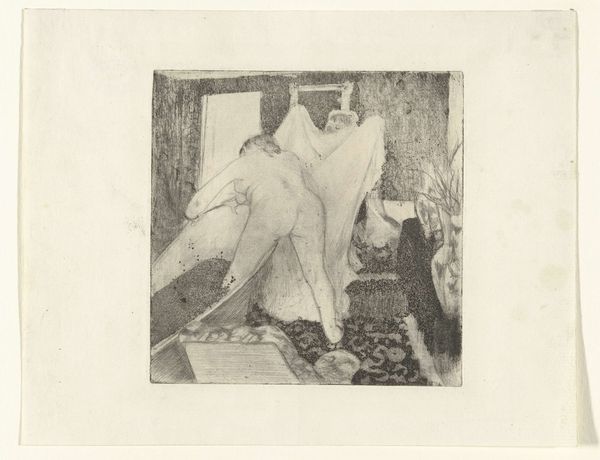
Fotoreproductie van een schilderij, voorstellend een piëta door Daniele Crespi c. 1860 - 1875
0:00
0:00
painting, print, photography, gelatin-silver-print
#
painting
# print
#
figuration
#
photography
#
gelatin-silver-print
#
history-painting
#
realism
Dimensions: height 293 mm, width 243 mm
Copyright: Rijks Museum: Open Domain
Editor: Here we have a photograph, a gelatin silver print from around the 1860s-1870s, which reproduces Daniele Crespi’s painting of a Pietà. There's a somber mood, heightened by the monochromatic tones, but the realism is striking. What do you see in this piece, looking beyond the immediate religious context? Curator: What jumps out is how this reproduction flattens the original painting but, paradoxically, makes it more real. The history of reproducing art is intrinsically tied to democratization, to accessibility for broader audiences who wouldn't have access to the original, often monumental, works. This reproduction also brings into focus questions about authenticity, aura, and the changing role of art in a society increasingly mediated by images. Consider the social function; do you think these photographic prints challenge or reinforce existing power structures by depicting scenes like this? Editor: I suppose it does democratize access. It brings previously elite religious imagery into more homes. But also, the very act of photographic reproduction alters the "truth" of the original painting. It presents a version, interpreted through the lens and the printing process, further removed from the "source". Curator: Precisely! And this highlights the complex interplay between art, technology, and social change. The photograph's indexicality—its presumed direct link to reality—is crucial here. Even as a reproduction, it carries a specific charge; it places us, the viewers, in direct conversation not only with the painting but also with the mechanics and ideology embedded within the reproductive process. This tension is ripe for exploring issues of cultural capital and authenticity in the Victorian era, no? What resonates with you most? Editor: It's interesting to consider the different layers of mediation between us and the original artwork, especially the shifting concepts of accessibility. I never really thought about realism as it relates to "truth" in art before! Curator: That is a fascinating tension, the layered distance yet increased presence in the Victorian era and today.
Comments
No comments
Be the first to comment and join the conversation on the ultimate creative platform.
